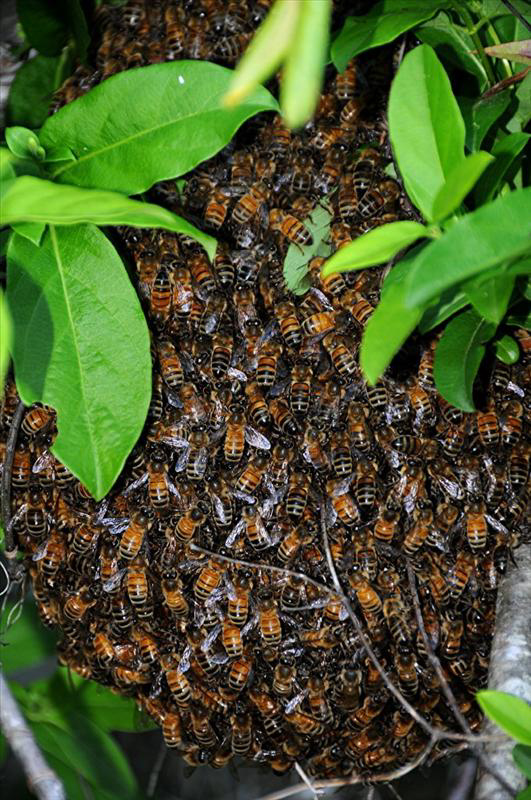All photographs and their copyright remain the sole property of the photographer and may not be used or reproduced elsewhere without their express permission.
 Image copyright © William MacKenzie All Rights Reserved. Unauthorized copying or use is strictly prohibited.
Image copyright © William MacKenzie All Rights Reserved. Unauthorized copying or use is strictly prohibited.

Reproductive Fission
by William MacKenzie (wmackenzie)
Camera: Nikon D-300
Location: North Carolina
United States of America
Photographer Notes: While visiting my wife’s sister and her husband in North Carolina, my daughter and great-niece went for a walk around the perimeter of the yard. When they came back, they reported seeing a swarm of bees in the tree line. Of course, the first thing I did was grab my camera to go have a look.
Scientifically, swarming is called ‘reproductive fission’, a process whereby a social insect colony splits into one or more subunits, each containing at least one queen and a fraction of the colony's workers.
A natural occurrence in the wild, swarming propagates the species.
It is always a planned event and can be caused by overcrowding, starvation or internal hive problems. Overcrowding is the main reason for a honey bee swarm though. A swarm consists of the original queen and several thousand workers. A swarm will cluster on a branch near the original nest while scouts seek a new, permanent location. This may take a few hours or a few days. Rarely, a swarm will build a new nest where it first alights.
|
Member Ratings:
|
photographyvoice.com users can rate this page or image. To create an account, click HERE.
         
  3.14 (11 votes) 3.14 (11 votes)
|
Page generated in 01.0375 seconds.
|
|
Copyright © 2000-2025 photographyvoice.com / PEI Development. All Rights Reserved.